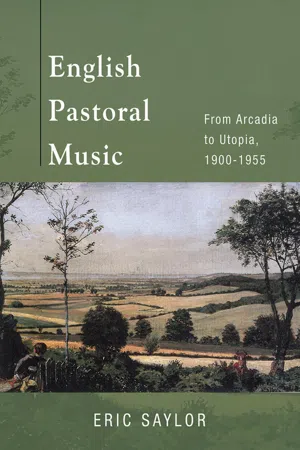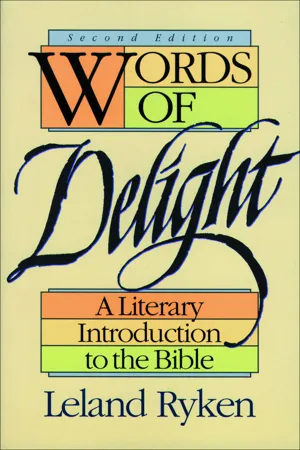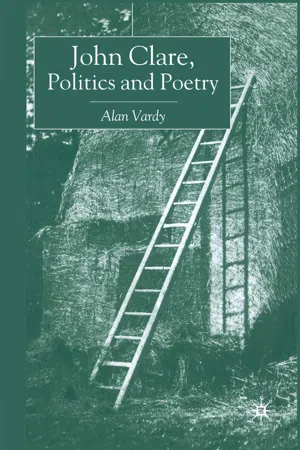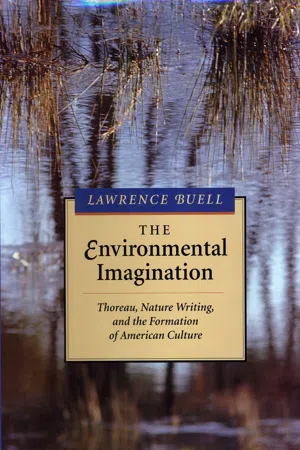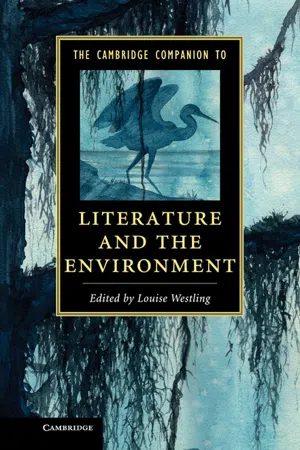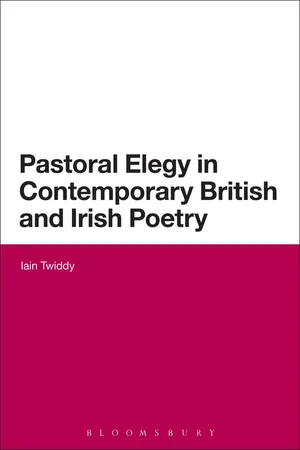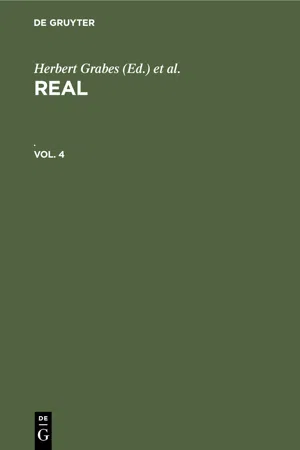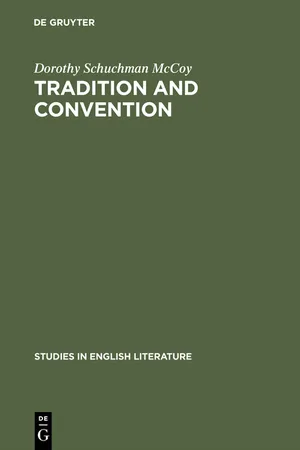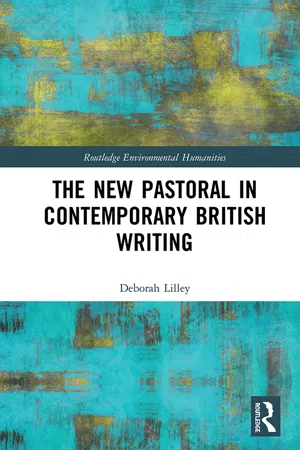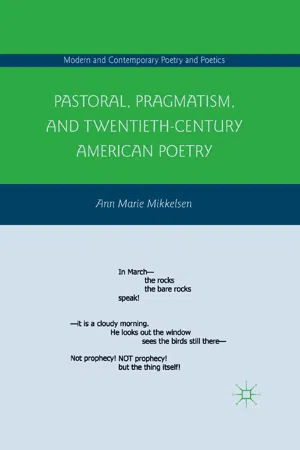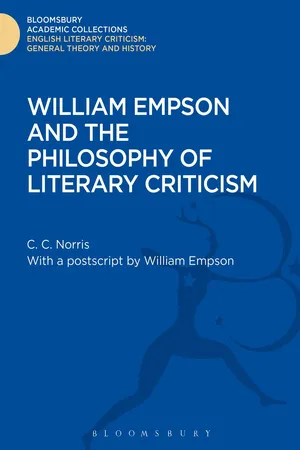Literature
Pastoral Poetry
Pastoral poetry is a literary genre that idealizes rural life and nature, often depicting shepherds and rustic settings. It originated in ancient Greek and Roman literature and has been a popular theme in English literature, particularly during the Renaissance. Pastoral poetry typically explores themes of love, beauty, and the simplicity of rural existence, offering an escape from the complexities of urban life.
Written by Perlego with AI-assistance
Related key terms
1 of 5
11 Key excerpts on "Pastoral Poetry"
- eBook - ePub
English Pastoral Music
From Arcadia to Utopia, 1900-1955
- Eric Saylor(Author)
- 2017(Publication Date)
- University of Illinois Press(Publisher)
1.What Is Pastoralism?
As even casual surveys quickly reveal, “pastoral” sports almost as many definitions as it does people who wish to describe it. Among literary specialists, the term traditionally denotes a type of poetry focusing on the lives of shepherds or herdsmen, often (though not exclusively) set against the backdrop of classical antiquity or an idyllic Golden Age.1 However, a tension exists between describing pastoral this way, as a genre (i.e., defined in part by the presence of certain formal characteristics) versus the equally common method of framing it as a mode (i.e., “the place in which our notion of the world comes to be manifested in the text”).2 Many authors also treat the pastoral as a discrete style capable of invoking various literary traits—so many, in fact, that Lawrence Buell has observed that it potentially encompasses “all literature—poetry or prose, fiction or nonfiction—that celebrates the ethos of nature/rurality over…the ethos of the town or city.”3This more inclusive construction of the pastoral has obliged literary theorists to acknowledge (sometimes reluctantly) the often messy evolution and transformation of its meaning, in which style, mode, and genre all overlap and interact.4 For instance, William Empson's characterization of pastoralism as a “process of putting the complex into the simple” turns the pastoral into an abstract creative concept rather than a concrete set of literary traits.5 More poetically still, Kate Kennedy describes the pastoral as “a genre shaped by nostalgia: the distance between the present and memory, and the physical distance between the location of the writer and the absent landscape described.”6 These are but two of the many ways that pastoral literature has been reimagined and reinvented over the centuries, exponentially increasing the number and types of works that fall under its rubric and complicating our understanding of just what, exactly, it is.7 - eBook - ePub
Words of Delight
A Literary Introduction to the Bible
- Leland Ryken(Author)
- 1993(Publication Date)
- Baker Academic(Publisher)
A great deal of the love poetry of the world has been Pastoral Poetry, and here, too, the Song of Solomon runs an expected course. In Pastoral Poetry the characters are shepherds, the setting is rustic, and the actions are those customarily done by shepherds. The very landscape counts for a lot in such poetry, and descriptions of the setting are prominent.Such poetry is metaphoric from start to finish. No one pretends that it portrays literal events. In fact, most Pastoral Poetry in ancient times was written by city poets about court figures. The shepherd paraphernalia is sometimes a disguise for actual people, but in any event the life portrayed is a metaphor for the realities of love. Failure to realize the essentially fictional mode of pastoral has been debilitating to the interpretation of the Song of Solomon. When the woman asks where her beloved pastures his flock (1:7), there is no reason to assume the existence of a rustic lover back home. In Pastoral Poetry, such language often refers to court people.In pastoral love poetry, various aspects of the romance are described in rustic imagery. A standard genre, for example, is the pastoral invitation to love, in which the speaker invites his or her beloved to a life of mutual love. It is in effect a proposal of marriage. But in pastoral literature the invitation is expressed metaphorically as a request to go for a walk in the countryside. The Song of Solomon contains two pastoral invitations to love (2:10–15; 7:10–13).Another pastoral form is the blazon, in which the speaker praises the beauty and virtue of the beloved by comparing them to objects in nature. There are numerous examples in the Song of Solomon, including 2:1–3; 4:1–5, 12–15; 5:12–16; and 7:1–9. Yet another strategy is simply to describe the delights of the love relationship in rural images and metaphors, a technique that pervades the Song of Solomon:My beloved is to me a cluster of henna blossoms in the vineyards of En-gedi. [1:14] With great delight I sat in his shadow, and his fruit was sweet to my taste. [2:3b]Many pastoral love poems fall into the category of the lament or complaint, in which the speaker bemoans the frustrations of separation. In the Song of Solomon, for example, we find this lover’s complaint about how hard it is for the woman to find time alone with her man (1:7): - eBook - PDF
- A. Vardy(Author)
- 2003(Publication Date)
- Palgrave Macmillan(Publisher)
Blair's history of the classical invention of Pastoral Poetry made it clear that pastoral was not rural poetry produced by rustics, Clare's idiom, but a pleasing mode of urban nostalgia: It was not till men had begun to be assembled in great cities, after the distinctions of rank and station were formed, and the bustle of Courts and large Societies was known, that Pastoral Poetry assumed its present form. Men then began to look back upon the more simple and innocent life, which their forefathers led, or which, at least, they fancied them to have led: they looked back upon it with pleasure; and in those rural scenes, and pastoral occupations, imagining a degree of felicity to take place, superior to what they now enjoyed, conceived the idea of celebrating it in poetry. (pp. 115-16) Pastoral Poetry was an urban affectation, quite unlike Clare's faithful record of a rural landscape meticulously viewed and represented. Viewing and Reviewing 37 In order to satisfy this particular taste, a peasant poet had to become a part of his or her own pastoral world and thus a living evocation of the nostalgia the reader sought. Blair wrote that the purpose of Pastoral Poetry was to: 'banish from our thoughts the cares of the world, and to transport us into calm Elysian regions' (p. 116). Clare's poetry could hardly fulfil this need while the 'Elysian regions' that he represented in his poems were being torn up and enclosed. The stark realism of many of Clare's descriptions of rural hardship and privation challenged readers, and potentially produced the opposite effect to the one Blair described. - eBook - PDF
The Environmental Imagination
Thoreau, Nature Writing, and the Formation of American Culture
- Lawrence Buell(Author)
- 1996(Publication Date)
- Belknap Press(Publisher)
I H istorical and T heoretical C ontexts P astoral I deology The line between a mythic drama that helps to redeem people in the here and now, and one that simply lends to an opiated passiveness, is necessarily thin. —Genaro M. Padilla, “Myth and Comparative Cultural Nationalism” those who want to reform society according to nature are neither right nor left —Anna Bramwell, Ecology in the Twentieth Century Persuade a careless, indolent man to take an interest in his garden, and his reformation has begun. —Susan Fenimore Cooper, Rural Hours I of pastoral, for “pastoral” has be-come almost synonymous with the idea of (re)turn to a less urbanized, more “natural” state of existence. 1 Indeed this entire book, in focusing on art’s capacity to image and to remythify the natural environment, is itself a kind of pastoral project. Historically, pastoral has sometimes activated green consciousness, sometimes euphemized land appropriation. It may direct us toward the realm of physical nature, or it may abstract us from it. These I take to be the basic issues of ideology and representation posed by pastoral tradi-tion, and the purpose of the next two chapters is to deal with each in turn, with special reference to American literary history. Pastoral’s internal contradictions, inherent from antiquity, have inten-sified since classicism began to break down in the post-Renaissance. In Greco-Roman literature, pastoral both satirized and replicated the hyper-civilization of urban life by portraying supposititious shepherds and other rustics in such stylized attitudes as playful exuberance and amatory despair. In English literary history, pastoral was further developed by Edmund Spenser, John Milton, and others as a highly learned, allusive discourse, as befit the element of playful artifice already present in Theocri-tus. - Louise Westling(Author)
- 2013(Publication Date)
- Cambridge University Press(Publisher)
Thus pastoral literature should deliver more than a narrative of a journey into the natural world. The link between pastoralists as shepherds and pastoral concerns for well-being, as in the term “pastor,” is not accidental. Pastoral concern might be for human life or the life of the environment of retreat, or both. Pastoral, Anti-Pastoral, and Post-Pastoral 19 Two centuries after the Greek Idylls of Theocritus, the Roman poet Virgil (70–19 BCE) added to our cultural discourse the notion of Arcadia as a liter- ary construct of the location of pastoral retreat. Although based upon a real region of Greece, this literary Arcadia is a space in which the pastoral pre- tense can be acted out in its allegorical drama of interactions and dialogues between shepherds or their equivalents. In the Eclogues (42–37 BCE) Virgil evokes a Golden Age of the past that is set against the instability and alien- ation of the present. Later readers would rediscover Arcadia in Eden, the Forest of Arden, Marvell’s gardens, John Muir’s Yosemite, and the Georgian poets’ English countryside during the First World War. The recognition of Arcadia invokes the knowing paradoxes of classical pastoral – nature and place as a literary construct, the poetic rhetoric of herdsmen, retreat in order to return, the apparent idealization that might reveal truths, fictions that examine realism, the guise of simplicity that is a vehicle for complexity. The delights of the human being embedded in nature are thus celebrated while their limitations are simultaneously examined. Much of this subtlety can be obscured by the later development of a succession of pastoral modes that varied in quality within each period and can easily be dismissed or parodied.- Iain Twiddy(Author)
- 2012(Publication Date)
- Continuum(Publisher)
55 Since traditional pastoral is communal, focusing on a community of shep-herds, it offers a form in which to examine how people live together, or how they should live together. For Raymond Williams, pastoral is an aristocratic fantasy which obscures the reality of rural communities: ‘It is not easy’, he writes, ‘to forget that Sidney’s Arcadia , which gives a continuing title to English neo-pastoral, was written in a park which had been made by enclos-ing a whole village and evicting the tenants.’ 56 In ‘The Village’, as long ago as 1783, George Crabbe pointed out that ‘the Muses sing of happy swains/ Because the Muses never knew their pains’. 57 Pastoral elegy offers the oppor-tunity for poets to consider how events affecting these communities should be addressed or assimilated, and positing visions of consolation or aspira-tional social models, in keeping with Virgil’s bee community in Book IV of the Georgics , with its ‘Great-hearted leaders, a whole nation whose work is planned,/Their morals, groups, defences’, described in great detail. 58 In its use in mourning, pastoral elegy can look backwards to national his-tory, but its energy directs the poet away from the past and into – in Freud’s words – a ‘free and uninhibited’ present and future. 59 In Ireland, for W. B. Yeats and other writers of the Revival, pastoral was a means of effecting recovery, as well as repairing in literature a traumatized relationship with the land. As Oona Frawley writes in her history of pastoral in Irish writing: Pastoral Elegy in Contemporary British and Irish Poetry 22 This new mythology was put into effect with a breathtaking rapidity: only fifty years after the Famine, when such a rupture had occurred between the Irish people and the natural world, politics and literature managed to reforge a bond based on the principles of the pastoral.- eBook - PDF
- Herbert Grabes, H. J. Diller, Hans Bungert(Authors)
- 2020(Publication Date)
- De Gruyter(Publisher)
Yonder the road curves languidly between hedges and broad fringes of green, and along it an old man guides the cattle in an afternoon milking . . . They turn under the archway of a ruined abbey, and low as if they enjoy the reverberation, and dissappear. 2 These images of harmony, peace and beauty are obviously not compati-ble with the facts of social observation. The writer, therefore, while creating and savouring the pastoral illusion, is also at pains to explain 2 Thomas, 62-63. The stanza quoted by Thomas is from Richard Barnfield's The Shep-heards Content or The Happiness of a harmlesse life ( The Affectionate Shepheard, 1594). 70 Hans Ulrich Seeber the mechanism of the projection. Given the conditions of modern expe-rience (the power of the world) and the impact of the aesthetics of realism, traditional pastoral is turned into a sort of meta-pastoral. It be-comes the product of a certain mental disposition teased into activity by congenial surroundings and the power of personal needs and reminis-cences in the context of a complex civilization. In acknowledging or suggesting this affinity, such country books declared themselves to be the heirs of a tradition and a structural con-stellation which was by no means dead nor, indeed, likely to die in an age of increasing social and cultural complexity. For the pastoral, both in its traditional form and in the broader guise of country literature, could —among many other functions—become for sophisticated readers and writers an outlet for their desire, whether for valid reasons or not, to withdraw from an increasingly urban society to a simpler, more natu-ral and presumably happier level of existence. Many of these country books, describing as they did traditional and time-honored patterns of interaction between man and nature, seemed, moreover, to provide alt-ernatives to the disconcerting experience of what has been termed by Reinhart Koselleck the acceleration of time (19, 63). - eBook - PDF
Tradition and convention
A study of periphrasis in English pastoral poetry from 1557–1715
- Dorothy Schuchman McCoy(Author)
- 2015(Publication Date)
- De Gruyter Mouton(Publisher)
III. PERIPHRASE WITHOUT PURPOSE A. PASTORAL REALITY IN A METAPHORICAL FIELD So 'shepherd' can on occasion mean 'poet'; to sing or play in shepherd fashion is to write and publish poetry ... to be taught by the Nymphs as one pastures cattle among the hills, so that Rumour carries the report of one's singing up to the throne of Zeus, is to win the royal favour and patronage as a writer of verse ,.. 1 Clearly, the conventional language has endured through many centuries of Pastoral Poetry. The representative nature of pastoral has almost become a part of the pastoral tradition itself, although classical critics who distinguish sharply among the three styles of rhetoric, and who think of allegory as a tool of satire, do not like to let it make the pastoral language more complex. But this evidence of allegorical correspondents for parts of a pastoral scene or for personages in it comes from the Seventh Idyllium of Theo-critus. Theocritus, for later critics, is the father of pastoral realism. Theocritus' shepherds may be real country people, but as Herbert Rose demonstrates, the suggestion of other meanings seems never to be far from pastoral imagination. The pastoral scene, even a realistic one, prods the poet into interpretation. The evidence of fixed allegorical patterns behind this setting does not, as has been asserted earlier, immediately degrade the poetry to an automatic outpouring of fixed references. What is bad in poetry of this kind will be made clear by later examples. The pastoral tradition cherished by many includes the non-literal use of words 1 Herbert Jennings Rose, The Eclogues of Vergil (Berkeley and Los Angeles, 1942), p. 10. Reference to Theocritus' Seventh Eclogue. 162 PERIPHRASE WITHOUT PURPOSE and situations; whereas, other readers and poets prefer to eliminate every non-literal implication as unrealistic. But pastoral without some of its ideal suggestive coloring becomes burlesque. - eBook - ePub
- Deborah Lilley(Author)
- 2019(Publication Date)
- Routledge(Publisher)
re-formation in response to its time of writing. Recognising this flexibility presents a critical opportunity to explore the ways that our understanding of human actions in these interrelated contexts have altered over time, and in the case of this study, to examine how these understandings relate to, and have shifted in response to, our contemporary awareness of anthropogenic environmental change and its associated crises.Questions of naming and context: from idyll to crisis
For some critics, the issue of defining what pastoral is about has raised the question of terminology. The interest in naming and differentiating the pastoral by theme and period is not new. The question of the definition of pastoral has long been subject to measures of both theme and quality, and efforts to mitigate for its heterogeneity and contrasting theoretical applications. As Martha Hale Shackford observed, ‘pastoral has, in many cases, justly been a word of reproach and ridicule […] Pastoral, idyll, eclogue, bucolic are used interchangeably for productions that range from exquisite poetry to sustained doggerel’ (1904, 583). However, the interlinked issues of this legacy and the resurgence of interest in pastoral with the rise of ecocriticism and the environmental turn in literature has brought new focus upon what is meant by the term.Buell uses an endnote in The Environmental Imagination to explain his ‘elastic sense’ of the term ‘pastoral’ to refer to ‘all literature that celebrates an ethos of rurality […] over an ethos of metropolitanism’. Buell states a preference for the term ‘naturism’ over ‘pastoralism’, firstly as a means of negotiating the latter’s ‘ideological and aesthetic baggage’, and secondly as ‘referring unequivocally to the material nonhuman environment’ (1995, 439).14 The critical suspicion directed towards the pastoral has led Timothy Saunders to differentiate between ‘pastoral’ and ‘bucolic’ in favour of the latter in the introduction to Bucolic Ecology (2008, 8).15 - A. Mikkelsen(Author)
- 2011(Publication Date)
- Palgrave Macmillan(Publisher)
Invoking a modern, experimental approach to aesthetics and truth, a diverse array of early- to mid-twentieth-century poets—including Frost, William Carlos Williams, Wallace Stevens, John Ashbery, and Gertrude Stein—were able to reimagine relationships between the sophisticated poet and the relatively voiceless, less privileged other. The result is a poetics that interrogates the nature of the ethical individual and good society. Significantly, some of these texts are dialogic or dialogues of some kind, calling attention to the presence of multiple, at times competing, voices within a single text, as well as their role within a poetic discourse explicitly engaged in issues of national definition. Although previous accounts of American pastoral have pegged the mode’s obsolescence to the end of the frontier and a predominantly rural society by the 1890s, relegating modern pastorals to nostalgic posturing Introduction ● 5 or stances of environmental activism, I argue that a socially conscious Pastoral Poetry was in fact reinvigorated by turn-of-the-century cultural, economic, and political shifts and the increasingly nuanced distinctions among individuals and social groups that they engendered. 3 As American society grew more hierarchical and complex, it became all the more impor- tant to distinguish oneself from the crowd, to mark off the poet from the people, even as such individuals also registered desires to identify—for reasons ideological, aesthetic, and practical—with less privileged groups increasingly defined by class, ethnicity, race, gender, and sexuality. 4 White male poets’ adaptations of the pastoral mode enabled them to gesture toward their former centrality to American culture while negotiating the terms of their continued engagement with an increasingly diverse public sphere.- Christopher Norris(Author)
- 2014(Publication Date)
- Bloomsbury Academic(Publisher)
In Seven Types he continually refers to those inherent 'limitations of the human condition' which make up the subject-matter of Pastoral. Poetic meaning is not so much a matter of achieved verbal 'point' as of an implicit recog-nition of the shifts and evasions by which human dignity sus-tains itself. 'This sort of contradiction is at once understood in literature, because the process of understanding one's friends must always be riddled with such indecisions and the machinery of such hypocrisy' (p. 44). Pronouncements like this might seem to give reason for Tate's limiting judgement. However, taking account of the larger background of argument, I would suggest that they signify something more seriously rooted in Empson's humanist outlook. He pursues the implications of poetry, not into their formal extension as properties of poetic structure, but into the human context of a rich and diverse experience 'Beyond Formalism' 55 to which—on his principled assumption—they ultimately appeal. This amounts to a far-reaching difference of views as to the kind of experience which poetry ideally communicates. Graham Hough sees a model example of the creative experience i n Empson's poem 'Missing Dates'. 2 3 He interprets the process of creation as a slow, painful working of the almost inarticulate— the background of despair—into something like a rational, and therefore communicable form. This tallies with Empson's critical outlook, and makes a notable contrast with the Symbolist idea of the poet passively waiting upon the creative event. Empson's 'despair', the subject of Tate's suspicions, is something very different from the mood of Eliot's The Waste Land. In an early review of Sherard Vines's volume of poems Triforium, Empson remarks that this poetry expresses despair, but 'only in a tech-nical sense'; it is based 'not on renouncing anything', but on 'a solid and learned variety of gratification'.
Index pages curate the most relevant extracts from our library of academic textbooks. They’ve been created using an in-house natural language model (NLM), each adding context and meaning to key research topics.
